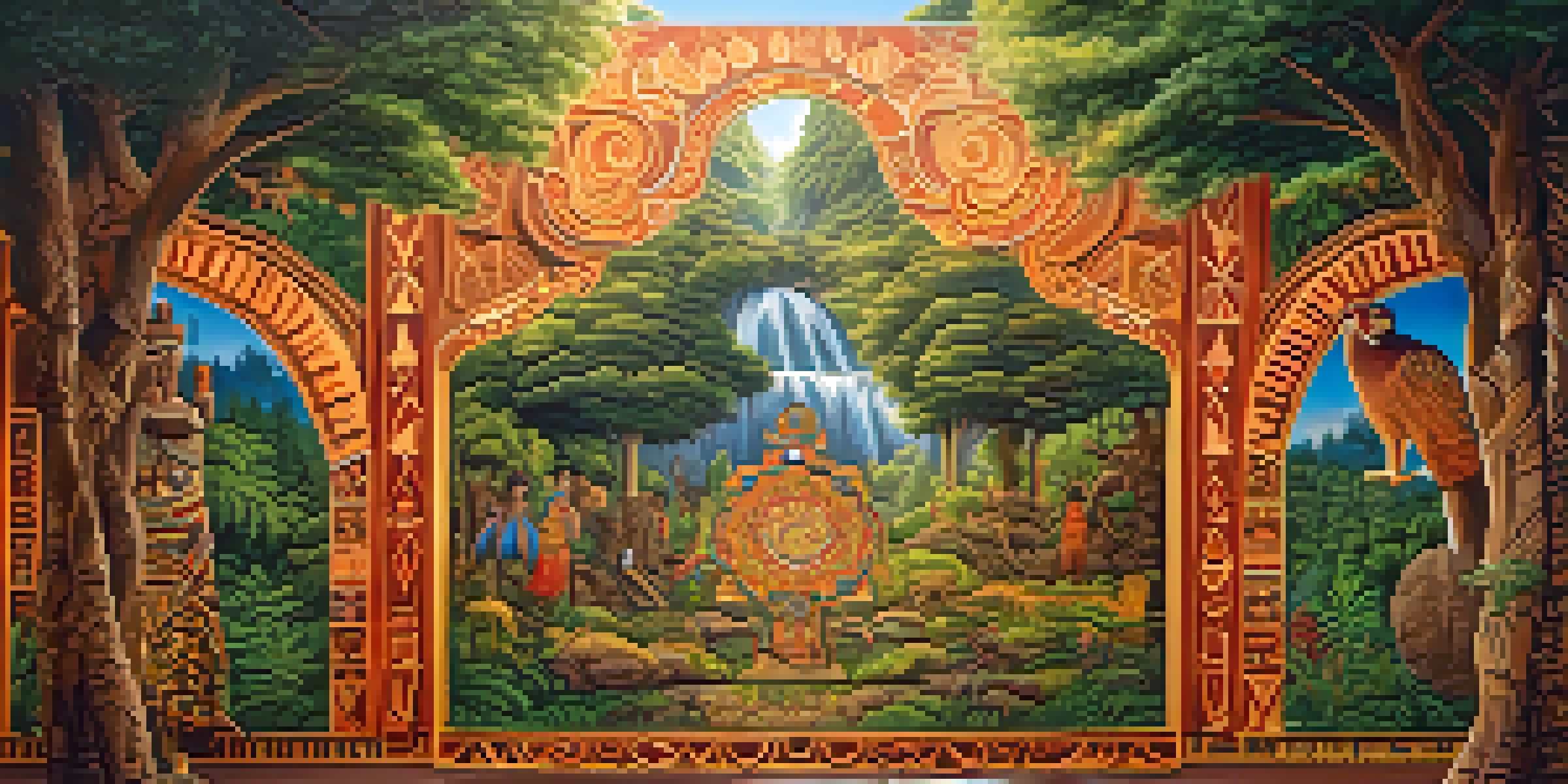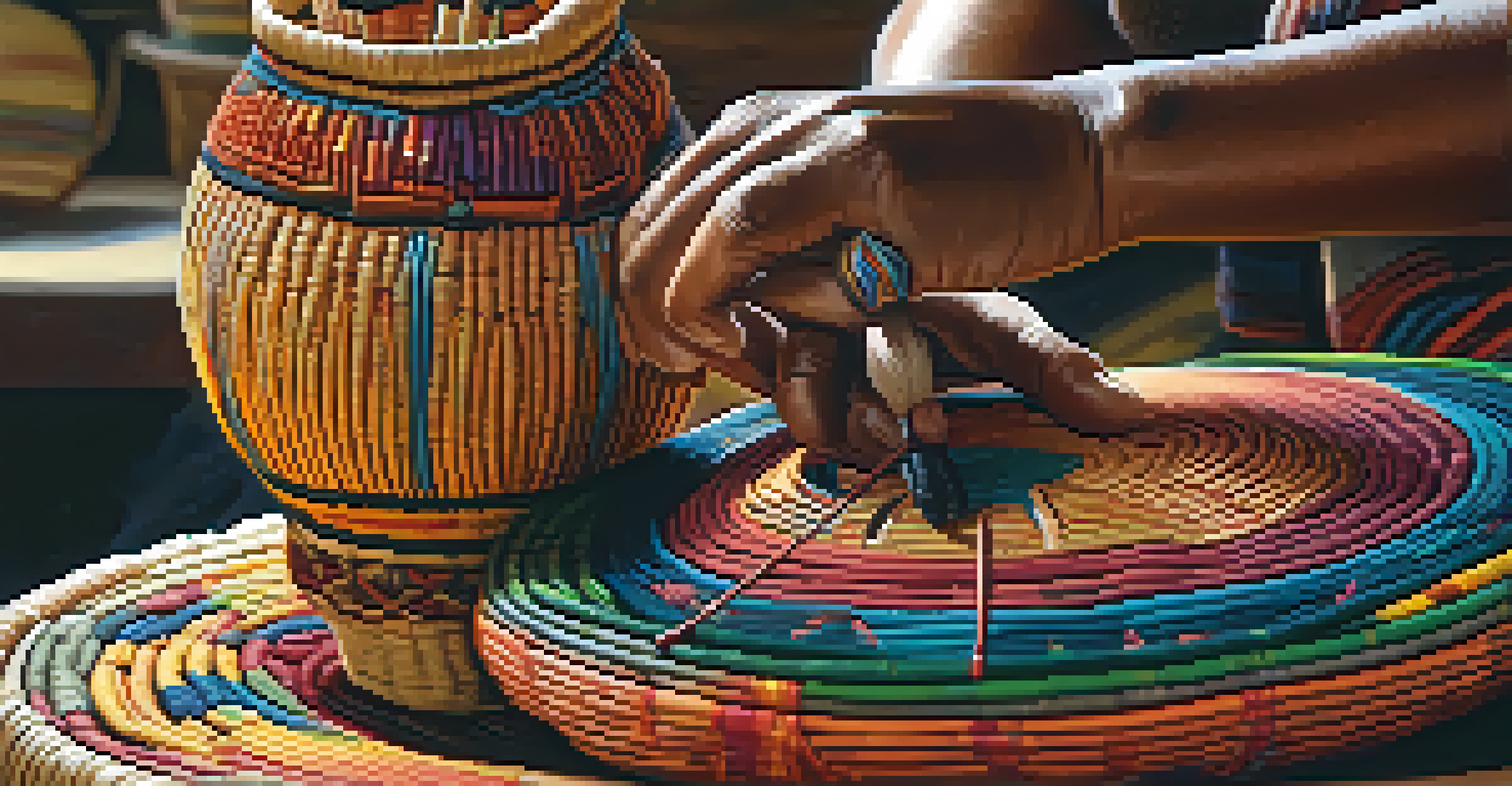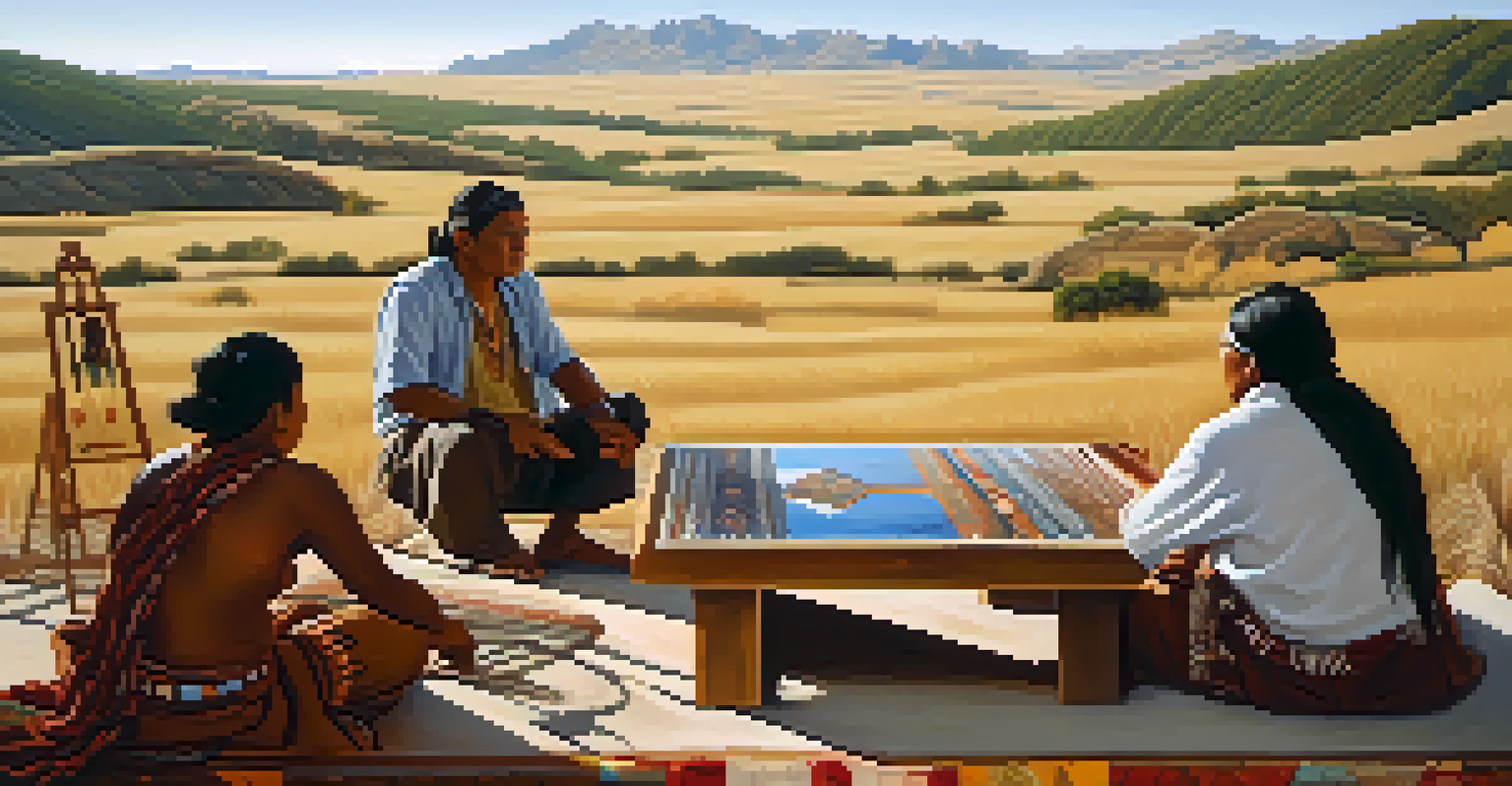Authenticity and Identity in Indigenous Art Forms

Understanding Indigenous Art: A Cultural Reflection
Indigenous art is not just about aesthetics; it serves as a profound reflection of cultural identity and heritage. Each piece of art tells a story, often rooted in the traditions, beliefs, and practices of Indigenous peoples. For example, a totem pole may represent clan lineage or significant events, offering insight into the community's values and history.
Indigenous art is a reflection of identity, history, and culture, not merely a commodity to be bought and sold.
This cultural reflection is crucial for preserving Indigenous identities in a rapidly changing world. As modern influences permeate Indigenous communities, art becomes a key medium for expressing and maintaining cultural narratives. It helps reinforce connections to ancestors and the land, fostering a sense of belonging among community members.
Moreover, Indigenous art often challenges perceptions and stereotypes, presenting a more nuanced understanding of these rich cultures. By engaging with this art, audiences can appreciate the depth and diversity of Indigenous experiences, moving beyond surface-level interpretations.
The Role of Authenticity in Indigenous Art Practices
Authenticity is a cornerstone of Indigenous art, shaping both its creation and reception. It involves the genuine representation of cultural practices, ensuring that the art reflects the true values and traditions of the community. Authentic works resonate with Indigenous peoples, as they embody their lived experiences and collective stories.

However, authenticity can sometimes be contested, especially in a globalized art market where appropriation often occurs. Non-Indigenous artists may draw inspiration from Indigenous motifs without a proper understanding or respect for their significance. This raises important questions about ownership and representation in the art world.
Cultural Identity Through Art
Indigenous art serves as a profound reflection of cultural identity, preserving traditions and fostering a sense of belonging within communities.
Ultimately, the call for authenticity encourages a deeper engagement with Indigenous cultures. It invites artists and audiences alike to appreciate the context behind the artwork, fostering respect and understanding that transcends mere aesthetics.
Indigenous Art as a Medium for Identity Formation
For many Indigenous artists, art serves as a powerful tool for identity formation. Through their creative expressions, they can explore personal and collective identities, often addressing themes of land, spirituality, and community. This process of creation allows artists to assert their identities in a world that may frequently overlook or misrepresent them.
Art is a powerful vehicle for healing and reclamation, allowing Indigenous artists to reclaim their narratives and strengthen their cultural identities.
Additionally, Indigenous art can provide a sense of empowerment and resilience. By reclaiming traditional techniques and themes, artists challenge colonial narratives and celebrate their heritage. This reclamation fosters a strong sense of pride and belonging, both for the artists and their communities.
Moreover, the act of sharing these artworks with broader audiences contributes to the ongoing dialogue about Indigenous identities. It encourages appreciation for the complexities of these identities, showcasing the diverse expressions of culture and experience within Indigenous communities.
Challenges of Commercialization in Indigenous Art
The commercialization of Indigenous art presents both opportunities and challenges. On one hand, it can provide financial support for artists and their communities, enabling them to thrive economically. On the other hand, commercialization can lead to the dilution of cultural meanings and the commodification of sacred traditions.
As Indigenous art enters the mainstream market, issues of authenticity may arise. Artists must navigate the fine line between creating art for cultural preservation and producing works that appeal to commercial buyers. This balancing act can be complicated, as the pressure to conform to market trends may overshadow traditional practices.
Authenticity and Representation
The importance of authenticity in Indigenous art ensures genuine representation of cultural practices, challenging appropriation and promoting respect.
Furthermore, the challenge of appropriation looms large. Non-Indigenous entities may profit from Indigenous art without proper recognition or compensation to the artists and communities. This highlights the need for ethical engagement and fair practices in the art market.
The Impact of Technology on Indigenous Art Forms
Technology is reshaping the landscape of Indigenous art, providing new platforms for expression and connection. Digital media allows artists to reach broader audiences, sharing their stories and cultural heritage in innovative ways. For example, social media can serve as a gallery space, showcasing artwork and engaging with viewers worldwide.
While technology can enhance visibility, it also raises questions about authenticity and cultural preservation. Artists must consider how digital representations of their work may differ from traditional forms. This concern is particularly relevant when exploring the nuances of Indigenous storytelling and symbolism.
Ultimately, technology offers both challenges and possibilities for Indigenous artists. By harnessing these tools, they can advocate for their cultures while navigating the complexities of modern existence, ensuring their voices are heard in contemporary dialogues.
Healing and Reclamation Through Artistic Expression
Art has long been a means of healing for Indigenous peoples, allowing for the exploration of trauma and resilience. Through creative practices, artists can process their experiences, addressing historical injustices and personal struggles. This therapeutic aspect of art serves not only the individual but also the community, fostering collective healing.
Moreover, the act of creating art can be a form of reclamation, where artists take back control over their narratives. By redefining their stories through art, they challenge the dominant narratives imposed by colonial histories. This reclamation process is vital for reinforcing cultural identity and pride.
Healing Through Artistic Expression
Art provides a means of healing for Indigenous peoples, allowing them to explore trauma and reclaim their narratives while fostering community solidarity.
In this way, Indigenous art becomes a powerful medium for transformation, offering pathways toward understanding and reconciliation. As communities engage with these artistic expressions, they can find strength and solidarity in their shared experiences.
The Future of Indigenous Art: A Blend of Tradition and Innovation
The future of Indigenous art lies in its dynamic ability to blend tradition with innovation. As artists draw upon their cultural roots, they also experiment with contemporary techniques and themes, creating works that resonate with diverse audiences. This fusion of old and new not only honors ancestral practices but also reflects the evolving nature of Indigenous identities.
Additionally, collaborative projects between Indigenous and non-Indigenous artists can foster mutual respect and understanding. By engaging in dialogue and sharing creative processes, these collaborations can bridge cultural divides and highlight the richness of Indigenous perspectives.

Ultimately, the future of Indigenous art holds promise for continued growth and visibility. As society increasingly values authenticity and diversity in artistic expression, Indigenous artists will undoubtedly play a vital role in shaping cultural conversations for generations to come.